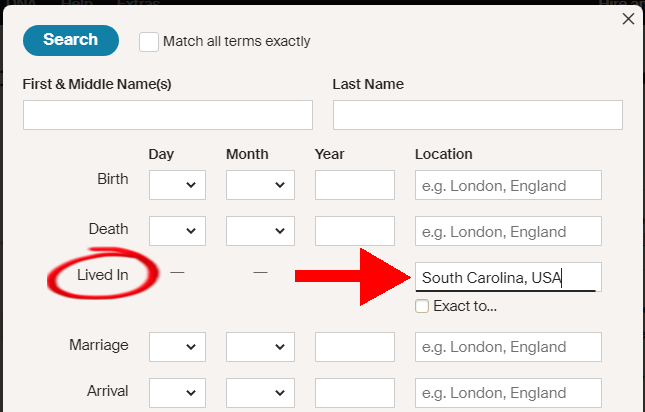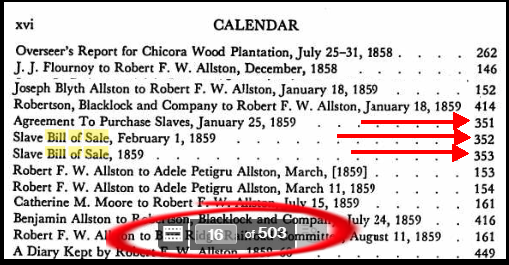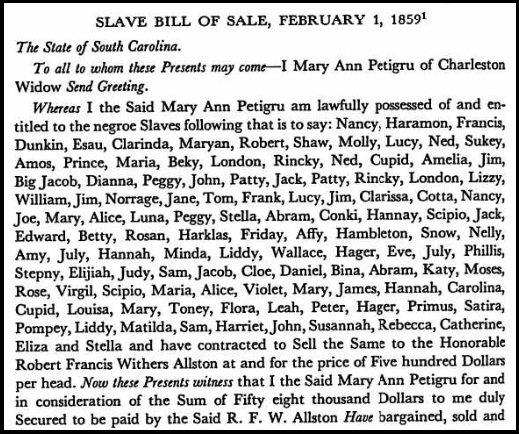A bill of sale is a legal document that records the sale and transfer of ownership of property. In the era of slavery in the United States, enslaved people were considered property.
A “slave bill of sale” was used to document the purchase of a slave from one owner to another.
It served as proof of ownership for the new owner and established the “legitimacy” of a slave’s status as property.
This article will show you how to track down bills of sale on Ancestry.com
What Information Is On A Bill Of Sale?
The documents typically include:
- name and age of the slave
- the purchase price for the individual
- any special conditions or terms of the sale
Occasionally, family relationships were also documented.
In the example I use below, there is mention of “an old man of 80 years, father of Betsy”.
How To find Slave Bills Of Sale On Ancestry
Ancestry has put together an overall category that includes many African American records.
This is known as the African American Collection.
Many items in the collection are scans of entire books. When these concern plantations or wealthy slave owners, the books can reproduce bills of sale and inventories of enslaved people.
Tips for searching
Even if you know the exact names and birth dates of the people you’re researching, I advise that you don’t use these details in your searches.
Most of the bills of sale only include first names. Aside from that, first names had many different spellings.
The bills of sale tend to record the ages of the enslaved (not date of birth), but these may not be accurate.
My advice is that you start by only filtering by state.
Step-by-step guide
(1) Open the search page for the African American collection.
(2) Enter the target state e.g. “South Carolina, USA” in the “Lived In” box near the top of the page.

(3) Scroll down to the end and find the Keyword input box.
(4) Enter “bill of sale” into the box.
(5) Click the search button at the bottom.
You’ll get a lot of results, but most are after 1900 and refer to normal property.
We want to restrict a bit better to the slavery era i.e. before 1865.
The left pane has date filters where you can restrict the date range.

Unfortunately, you can’t easily say – give me all records before 1865. I also find that if I restrict to individual decades, I can miss relevant documents.
My advice is to use a broad filter of the 1800s or 1700s.
In this example, I’m looking at the results for the 1800s.
Finding items of interest
You will need to scan through the results looking for potentially useful results.
In the example below, I can see by eye that the first results concern the sale of “Brass”, which isn’t relevant.
But the second result clearly concerns slave bills of sale.
Tips for searching the image collection
Here are my tips for searching an image collection.
The difference between an image and a record collection is that records have been individually indexed and are easier to search.
With an image collection, a set of papers or a book has been scanned and digitized.
When I click on the result, the image viewer opens on a single page within a book.
This happens to be a table of contents giving the page numbers of two slave bills of sale.

So, how do we jump to the page numbers? Well, it takes a bit of trial and error.
The viewer lets you jump to an image number in the sequence of images. That doesn’t correspond exactly to the page numbers but you can use it as a guide.
The targets I’m interested in are on pages 351, 352, and 353 in the book.
So, I enter 351 into the image box at the bottom and hit the “Go” button. Then I examine the top or bottom of the image to see the page number.
In this case, it’s page 326 so we’re a bit off. I know I need to put a higher number into the search box.
Eventually, I fell upon the correct pages. Here is the bill of sale of over sixty enslaved people.

The slaves only have first names, but the full names of the seller and buyer are provided.
There are more details in the previous pages that include which of the women were pregnant. One lady was “near time of delivery”.
Some are listed with trades such as carpenter or cooper. There are other somewhat offensive comments about some individuals.
Alternative Sources
We have a separate tutorial on searching for bills of sale on FamilySearch.
Unlike Ancestry.com, FamilySearch is free. You just need an email to create an account. Personally, I find Ancestry easier to search. But it’s worth trying as many online sources as you can.